The Gamal Hassan family welcomes you!
The El Gezira Hotel was built in 1996, renovated in 2021 and is a family-operated business. This small friendly hotel consists of 11 air-conditioned double rooms with ensuite bathrooms, a restaurant, a large front terrace, a lovely roof garden with a fabulous view of the Nile and Luxor. The rooms are used as single, double or triple rooms and are equipped with TV, refrigerator, air conditioning unit and free Wi-Fi. Our hotel is in the village of Geziret-el-Beirat near the river Nile. Here you can experience life in a traditional Egyptian village and you are not far from the thriving historic and commercial centre of Luxor.
Allow me to introduce myself: I am Gamal Ahmed Mahmood Hassan. My German-born wife , Britta, and I go to great lengths to ensure that our guests enjoy their stay. We strive to create a comfortable family-like atmosphere and attend to all the personal and touristic needs of our guests.
El Gezira's great location - on the famous West Bank of the Nile - makes it easy to reach all of the historic tombs, temples and ruins by taxi, collective taxi or bicycle. The museums, temples and central Luxor on the East Bank are easily accessed by ferry or motorboat; both are quick and inexpensive. The walk from the hotel to the bank of the Nile itself is only 3 minutes. The city of Luxor is full of things to do aside from discovering history: a wide array of restaurants, discos, bazaars and modern shops. After a busy day of sightseeing, EI Gezira offers many attractive possibilities to unwind by walking through local vegetable gardens and sugar cane fields. You can explore the fertile valley on donkey or Arabian thoroughbred. We are happy to organize cruises on the Nile in a motorboat, or a sail in a traditional "Felucca".
Relax and enjoy an amazing sunrise or the stars from our roof garden overlooking the beautiful skyline of Luxor. Snuggle up to a good book from our library. Converse with guests from all over the world or with the local people, who have made El Gezira a social meeting place. Enjoy a fine dinner accompanied with traditional Egyptian music and dances.

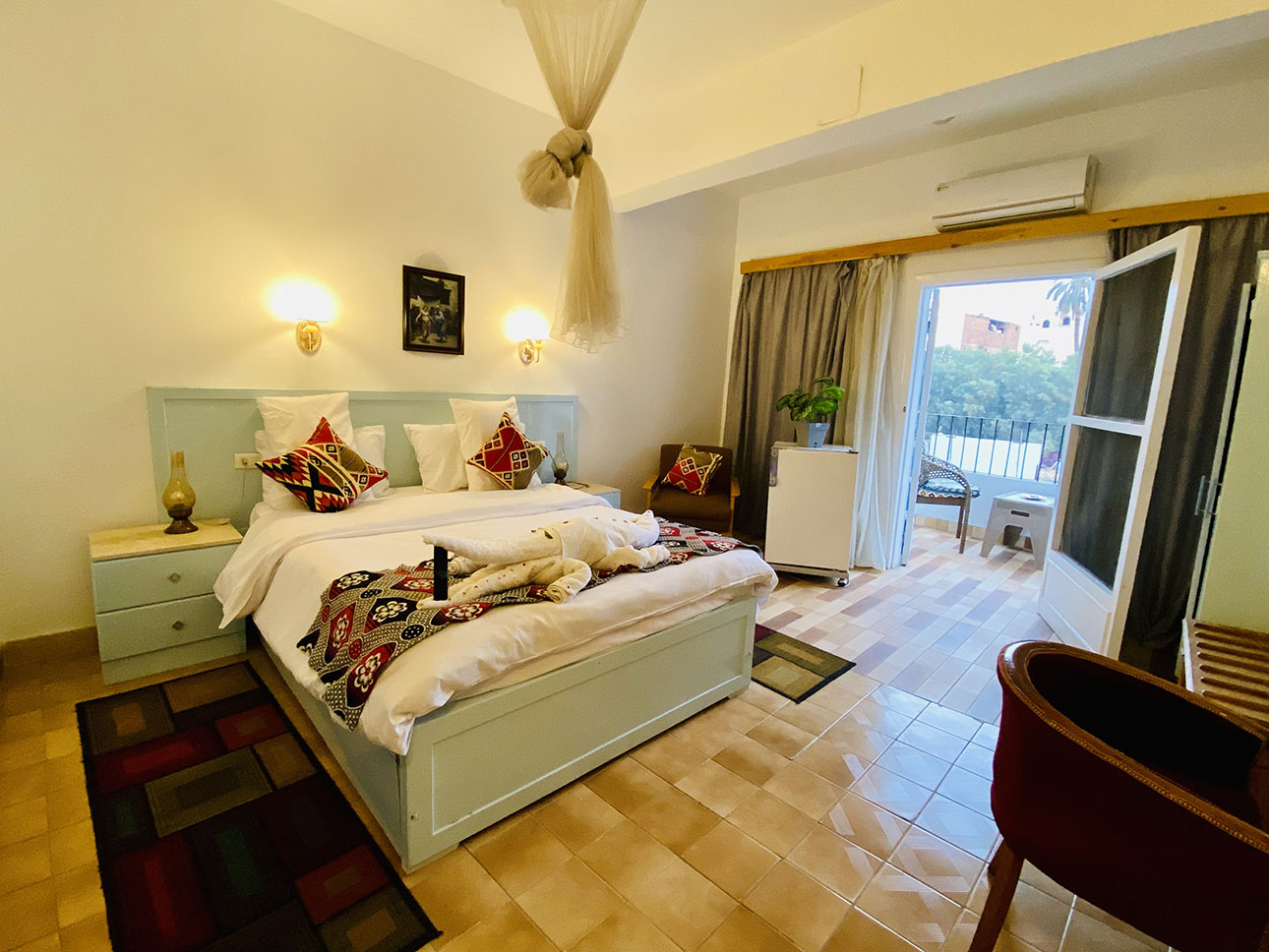

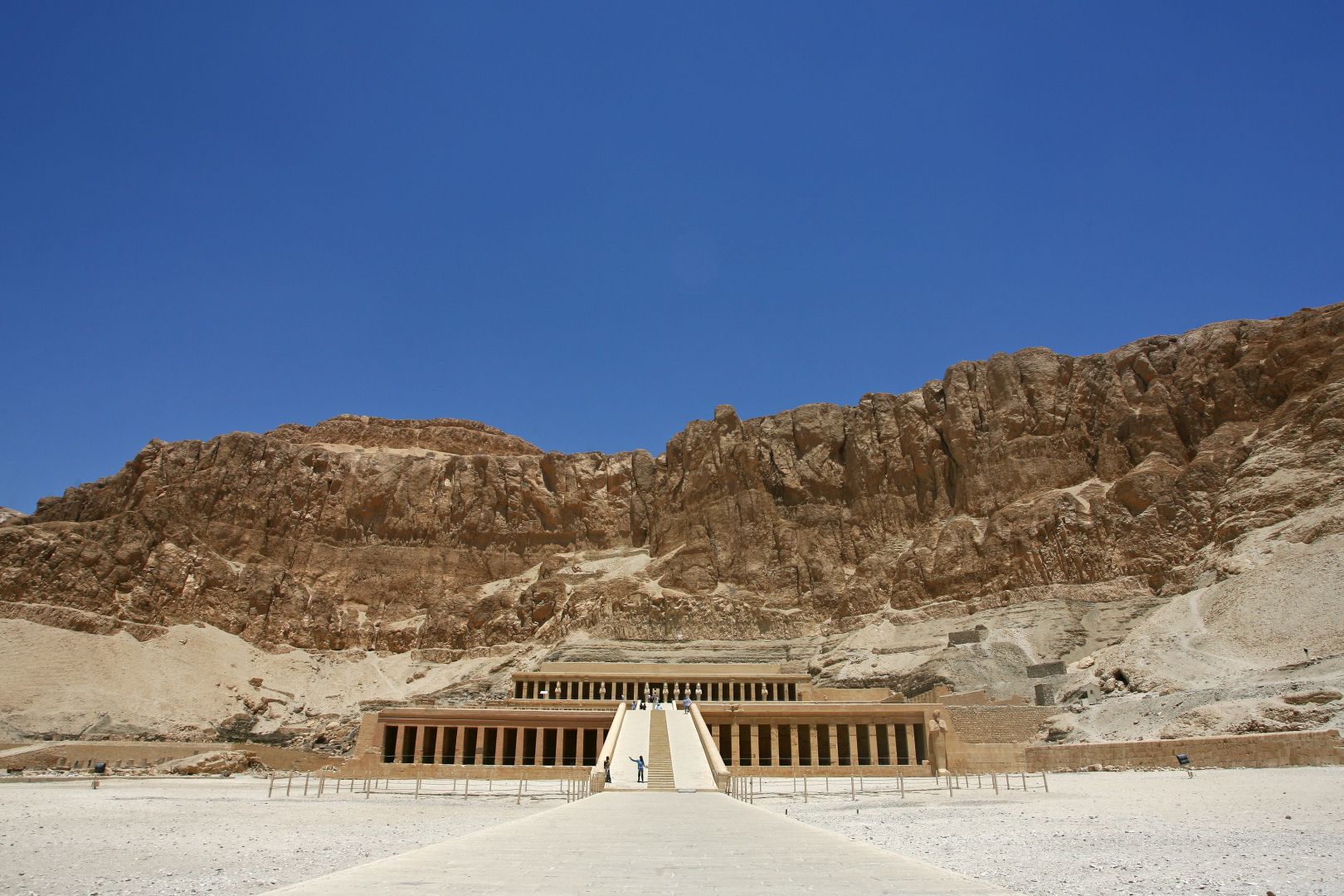












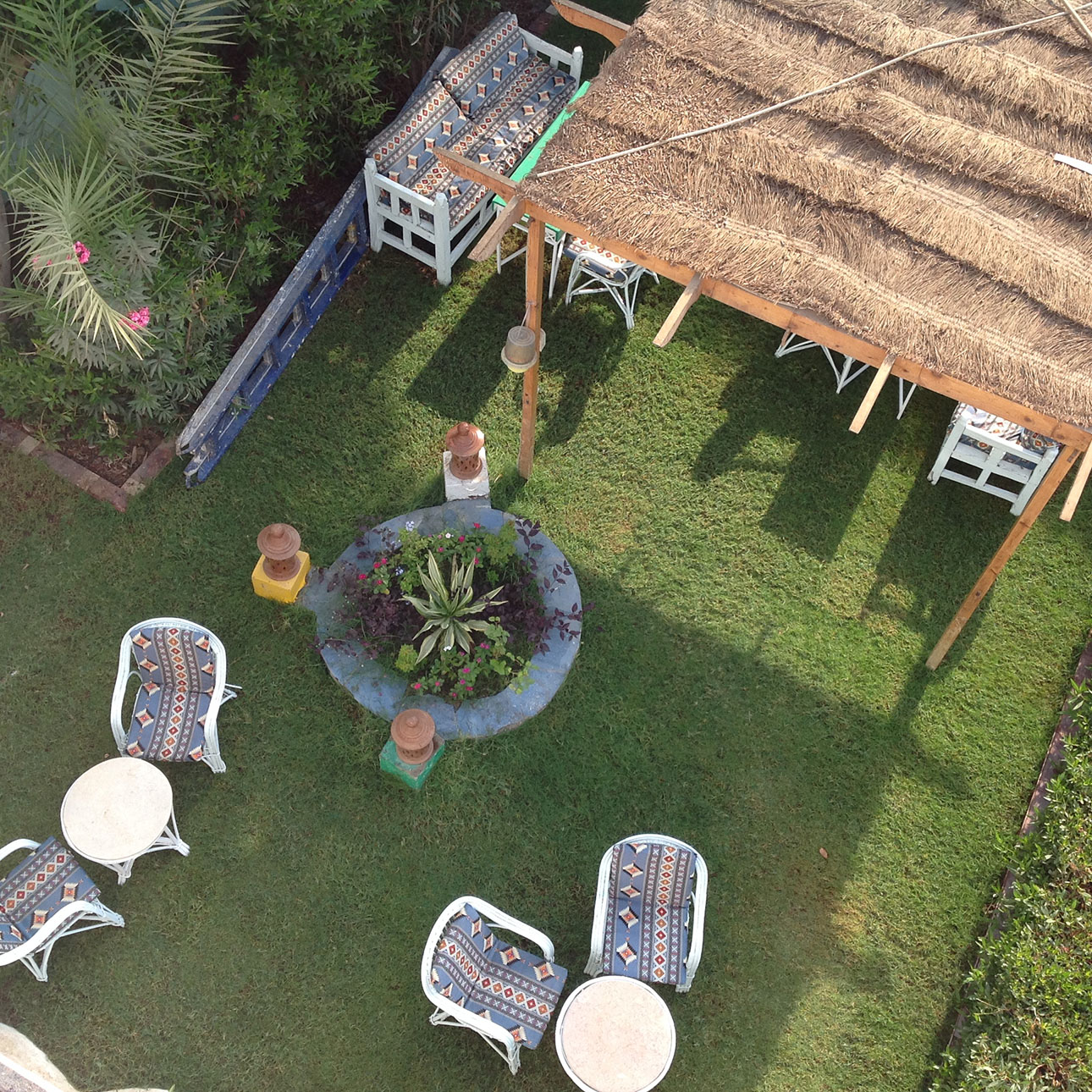


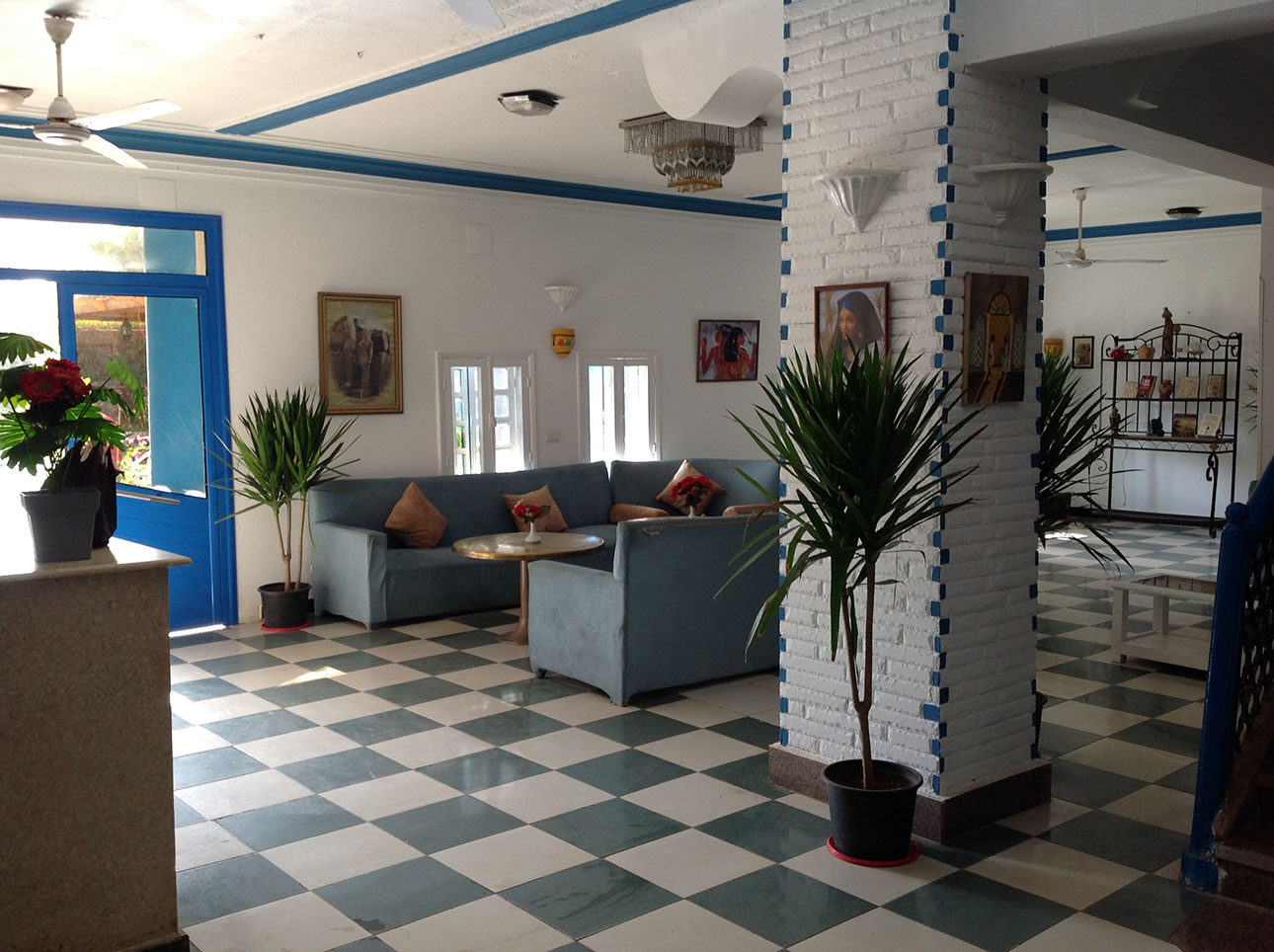





Historic Thebes (Luxor) was one of the most important cities of the ancient world. During the "New Dynasty" Thebes was the centre of Egyptian culture.
Today we marvel at the largest of all of Egypt's temple complex located on the East Bank. The West Bank leads us to the gigantic burial grounds of "Necropolis".
Luxor is a city filled with ancient and modem charms, international hotels, cafes, villages, farms, markets and bazaars. Experience Middle Eastern hospitality and a fascinating way of life.
Central Luxor is located on the "East Bank" and is approximately 600 km away from Cairo. Just North of Luxor is one of the most impressive temple complexes in the world: Karnak.
The West Bank region of the Nile, also known as Thebes West, is mainly agrarian and consists of many villages.
The airport is located about 8 km East of Luxor. The Hotel El-Gezira can be approached by either crossing the river Nile with the local ferry or by one of the little motorboats available or driving over the Luxor bridge about 5 km from Luxor centre.
The railway station is at the centre of Luxor town, from where the river Nile is quickly approached.
The best time to visit Egypt is the winter season.
Egypt is located in north-eastern Africa, with the Sinai peninsula extending into Asia.

Egypt serves as a cultural and physical bridge between Africa and Asia, Red sea and Mediterranean, Islam and Christianity. Egypt shares its borders with three neighbours, Israel to the Northeast, Sudan to the South and Libya to the West. The flight distance from London to Cairo is approx. 3510 Km.
Egypt consists of over 95% uninhabited desert. Most of Egypt is located in the Sahara desert, with the exception of the Sinai peninsula and the Mediterranean coast. The Nile valley is the longest river oasis in the world. The majority of Egypt's 90 million inhabitants, 20 million of whom are in Cairo, live in this valley.
With the exception of the coastal areas, the climate of Egypt is arid. Precipitation in the South is much more sparse than in the North e.g. Alexandria with 191mm, Cairo with 24mm and Aswan with less than 1mm per year.
The soil of the Nile valley contrasts strongly with that of the nearby desert. The ancient Egyptians used the terms "Black land" and "Red land" to describe these various zones. The dark Nile silt deposit is unto 10 meters thick and extremely fertile. In spite of industrialization, Egypt has remained a largely agrarian based country. The majority of the farming methods have remained unchanged for centuries. A complex system of irrigation allows farmers multiple harvests per year. The typical winter crops are wheat, barley, beans and onions. The typical summer crops are rice, sugar cane and cotton.
About 85% of the present population are descendants of the ancient Egyptians. The Egyptians belong to an ethnic group of the Berbers and are not Arabs. The Arabs, who conquered Egypt referred to the local people as "fellahs" (arb. Felah= field work), The most intact elements of the ancient Egyptian features are to be found in the Coptic Christian minority, which represent about 7% of the population. After the "Holy War of the Arabs" Islam was established as the dominant religion. About 80.000 Bedouins cling to their traditional way of life as desert nomads. Nubians from Sudan, displaced by the flooded Nasser lake region, also make up a part of Egypt's population.
Due to its sheer age, Egypt has a very impressive history. The Early Dynastic Period of the god-like pharaohs lasted 3200 years. The Old Kingdom is often referred to as the pyramid building era (2780 b.c.-2263 BC). During the Middle Kingdom Egypt was conquered by tribes from Asia. During the New Kingdom (1550 BC -1070 BC) Thutmose III developed Egypt into a world power. Numerous tombs, temples and monuments built by Egyptians, Nubians, Persians, Greeks, Romans Mamelukes and the Turks, are all witnesses in stone to Egypt's fascinating past. Egypt gained its independence from Great Britain and established a republic in 1953
Daily life in the ancient world, but above all, the worship of the Gods, took place at the east side of the Nile. The west side was reserved for the dead and the all-dominant death cult as the day was “born” in the East and “died” in the West.
The Luxor temple was built in the New Kingdom by Amenhote III. and Ramesses II. to honor the holy triad of Amun, Mut and Chons. The Luxor temple and the great Amun temple at Karnak were connected by a 3 km long procession road. Annual processions were held on this road.
The six colossal statues of Ramses, which once stood in front of the pylons, are no longer there. Two seated statues and a standing portrait of Ramses are all that remain. Originally two obelisks stood in front of the temple. The smaller of the two was given to France as a gift and is now at the place de la Concorde in Paris.
Expect to spend at least 2hrs to see Luxor temple.


The temple of Karnak is actually a temple city. Today, as well as in ancient times Karnak is the largest and most important temple complex in Egypt.
Building of the complex began during the early part of the Middle Kingdom. In the following 2.000 years the complex was under constant construction. The history of Thebes is closely associated with this complex.
In the center of Karnak is the great temple of Amun with it's six pylons make up the most important part of the temple complex. The pylons begin in the so-called great court and lead to the great hall of columns. Covering an area of 5.000 sq. meters, with 134 ca. 24 meter high, carved and painted stylized papyrus columns, this enormous sacred complex was in ancient times considered a wonder.
Passing the six pylons you reach the holy alter, where the statues of gods were kept. Other temples composed the East gate, which made up the end of the complex. Before this gate stood the ca. 30 meter high Lateran obelisk, which is now in Rome.
Karnak is about 3km North of Luxor. It can be comfortably reached by horse and carriage.
Expect to spend about 4hrs to see all of Karnak.



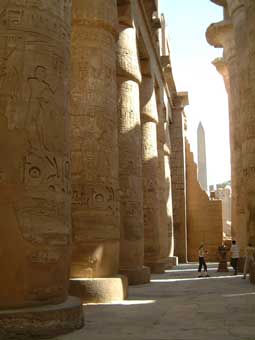



In 1975 a museum was opened on the Nile promenade(Corniche). The museum does a wonderful job of displaying historic artifacts and works of art discovered in Thebes and the region.
The museum opens after noon. For exact times please contact us.
Expect to spend at least 1-2 hrs. to visit the Luxor museum.
Direct on the Nile promenade (Corniche) near the Luxor temple is the museum of mummification.
The museum is dedicated to the ancient Egyptian science of mummification and has a fine collection of human and animal mummies.


"Sound and Light" is a show you won't want to miss! Allow yourself to be swept away by this light and audio extravaganza at Karnak.
"Sound and Light" is a 1hr. Show.


Pictures aof the Bazar
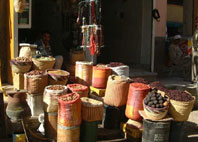





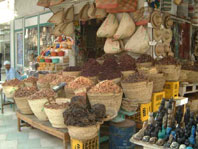


The "Valley of the Kings" runs directly into a mountain range near Thebes, where a mountain peak forms a natural pyramid. The valley derives ifs name from the stunning carved tombs of the pharaohs of the 18th,19th and 20th dynasty. These royal tombs, some carved some 200 meters into the mountain, consist of side chambers, niches, connecting tunnels and a burial chamber. The walls are decorated with scenes from the book of the dead. These scenes portray joy and suffering in the after life.
The belief in an after life drove the ancient Egyptians to go to great lengths to ensure themselves a comfortable after life. As counterpart to their tombs a funeral temple played an important and necessary part of the preparation and fulfillment of the after life. These funeral temples are usually several kilometers from the tomb and located in the Nile valley. The best examples are the temple of Ramesses II. (Ramesseum), Ramesses III. (Medinet Habu) and that of Hatshepsut (Deir el-Bahari).
We can only imagine the great treasures, which were meant to accompany these great kings in the after life. The discovery of the tomb of the rather unimportant king. Tutankamun gives us a small hint as to the treasures, which were to be enjoyed by the pharaohs in the after life. Most of these tombs were opened and plundered in ancient times, leaving only the royal mummy. In the 19th century an archeologist discovered a tomb, where many of these royal mummies had been moved and collectively buried. These royal mummies can be seen at the Egyptian museum in Cairo. The mummy of King Tutankamun is in the Valley of the Kings where it was laid to rest some 3.000 years ago.
Of the 65 discovered tombs only about 10 are really worth visiting. In chronological order:
Thutmose III. (Nr.34), Amenophis II. (Nr.35), Tutankhamun (Nr.62), Horemheb Nr.57), Ramesses I. (Nr.l6), Sethos I. (Nr. 17), Merenptah (Nr.8), Ramesses III. (Nr. 11), RamessesVI (Nr.9) and Ramesses IX (Nr.6).
Expect to spend about 4-5 hrs. to visit the Valley of the Kings.



Queen Hatshepsut is probably the most famous of all the women who ever rose to the throne to become Pharaoh. Her funeral temple is one of a kind and very well preserved. lt is at the foot of a 300 meter high cliff and consists of three terraces connected with ramps.


The tombs of about 500 citizens, priest and officials have been found in Thebes West. These tombs are decorated with breathtakingly elaborate and colorful frescoes depicting daily life in ancient Egypt. They are a strong contrast to the frescoes of royal tombs, which portray mainly ritual scenes. The most impressive of these non-royal tombs are:
Tomb of Nacht,
Tomb of Rahmose,
Tomb of Sennefer,
Tomb of Rechmire.




Ramses II. erected a temple for the supreme god Amun of the edge of the fertile Nile valley. This temple, like many others, was misused as a quarry since ancient times. Only about 50% of the temple is still in existence.
The fallen colossal statue of Ramses II. is impressive.



In a small canyon leading to the Valley of the Queens are the ruins of a small city. This city was reserved for the artisans, who built these fantastic tombs. The work they did was secret and here they were isolated from the rest of the population for the rest of their lives.
Some of the artisan built tombs for themselves. The tomb of Sennodjen is probably the most beautiful of these tombs.The tomb is rather small,but is wonderfully painted and should not be missed.


About 80 tombs belonging to members of the royal family have been discovered. In spite of their royal status, many of these tombs are very simple.The tomb of Nofretari, the favorite queen of Ramesses II. is the exception. This tomb took years to restore it to it's lavish original condition. This exquisite tomb is one of the climax of Thebes West We highly recommend visiting this site. Be sure to inquire about all rules and restrictions before visiting this site.

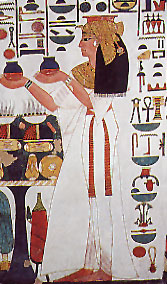
Another well preserved temple complex in Teben West. It probably the most complete complex. The temple is decorated with amazing wall reliefs depicting various pharaohs and their victories over foreign nations. Remnants of the original paint can still be seen today. We highly recommend visiting this temple.




Would you like some assistance with your sightseeing agenda? We can help to optimise your excursion plans. We can provide you with multilingual, licensed tour-guides who can provide you with an individual tour of the historic and everyday treasures of the region. Trips outside of Luxor can also be arranged.
Would you like to visit our museums? Would you like to see the awesome sound & light show in Karnak Temple? Would you like to explore the fertile Nile valley by bicycle or donkey? Or perhaps you would like to visit Banana Island, experiencing a lovely sunset in an Egyptian Felucca on the way? We can organise all of this for you.
And please enjoy the free use of our swimming pool in Gezira Garden Hotel, a 5minutes walk from Hotel El Gezira. Admission fee for non-hotel-guests is only EGP 100.
| Single room | €30 |
| Double room | €35 |
| Triple room | €40 |
| Half board | + €10 |
All prices are per room per night including breakfast. Half board supplement applies per person.
You are welcome to contact our German partner Beluga Reisen GmbH in case you wish to book flights to Luxor. They can also offer you a complete tailor made program for you holidays in Egypt
Travel options for the solar eclipse 2027 with its maximum duration between the Red Sea and Luxor are here to find: en.solareclipseegypt.com